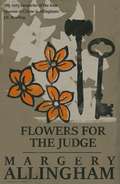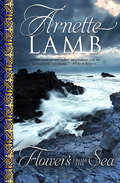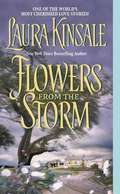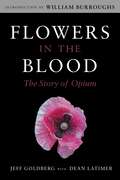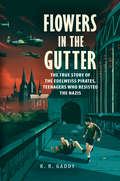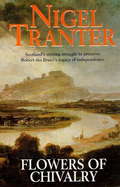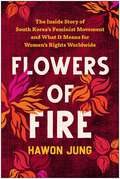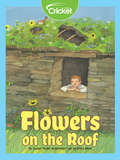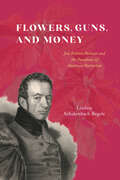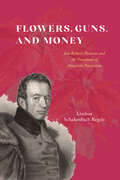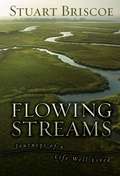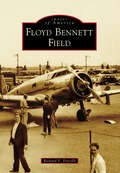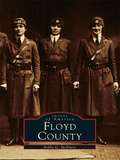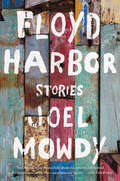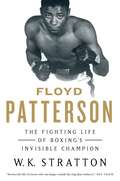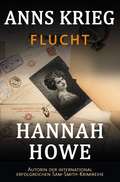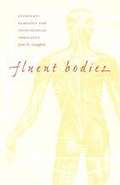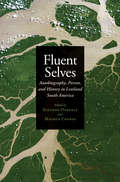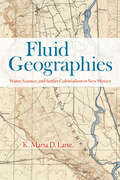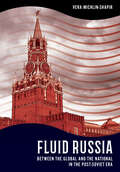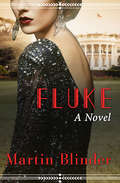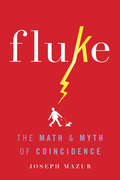- Table View
- List View
Flowers for the Judge (The Albert Campion Mysteries)
by Margery AllinghamGentleman sleuth Albert Campion tries to solve the murder of a prominent publisher in this “vivid and witty” British mystery (The New York Times).Scandal hits the prestigious publishing house of Barnabas when one of the directors is found dead in a locked cellar. All eyes are on the other partners at the firm—cousins of the dead man with much to gain from his demise—and all rumors hint at a connection to the disappearance of another director decades earlier. Desperate to salvage their reputation, the cousins turn to Albert Campion—but will his investigations clear the Barnabas family name, or besmirch it forever?“My very favourite of the four Queens of Crime is Allingham.” —J. K. Rowling“Ms. Allingham has a strong, controlled sense of humour and is never dull.” —Times Literary Supplement
Flowers from the Sea
by Arnette LambIn this historical, Scottish, romantic novella, a beleaguered lass follows a mysterious sea captain to ports of unknown danger and desire.One day of every year, a mysterious stranger arrives to toss a bouquet of roses into the Bay of Arran. He is the one Lily Hamilton must follow. Lily has lead a tragic life. Her mother slain in a bitter conflict with the neighboring MacDonnel clan, and her fortune lost to war, Lily lives on the precipice of disaster. Her only solace comes one day each year, her birthday, when she glimpses an enchanting ritual. On that one day, a sea captain arrives to pay his respect for an unknown loss. On the morning of her twenty-second birthday, Lily decides it&’s time to find out why. Overtaken by her curiosity, Lily flags down his ship and is taken captive, spirited far away from the world she once knew. She presses the captain, a loner named Hugh, for answers. But, as she pushes through his barriers and tragic background and into his arms, she will find out more than she ever could have bargained for—about loyalty, love, and her own clan&’s dark secrets.&“Lamb ignites readers&’ imaginations with her unforgettable love stories.&”—RT Book Reviews
Flowers from the Storm
by Laura KinsaleThe Duke of Jervaulx was brilliant and dangerous. Considered dissolute, reckless, and extravagant, he was transparently referred to as the 'D of J' in scandal sheets, where he and his various exploits featured with frequency. But sometimes the most womanising rake can be irresistible, and even his most casual attentions fascinated the sheltered Maddy Timms, quiet daughter of a simple mathematician.
Flowers in the Blood: The Story of Opium
by Jeff Goldberg William Burroughs Dean LatimerThe incredible and complex history of opium throughout the world.Opium has played a dramatic and varied role in human history, inspiring religious veneration, scientific exploration, the bitterest rancor, and the most fanciful ecstasy. Now, authors Jeff Goldberg and Dean Latimer have provided a complete, insightful history of opium. Flowers in the Blood lifts the veil of mystery that has surrounded opium down through the ages. Inside, discover: Why a three-thousand-year-old statue of a Greek goddess was crowned with poppies The formulas for Hippocrates's ancient opium remedies Why the Islamic councils of the wise vilified hashish but venerated opium Why there was no opium problem in nineteenth-century England and America despite unprecedented and unrestricted consumption of opiates What really provoked the Opium Wars in China Why John Jacob Astor quit the opium trade The unique role played by Chinese opium in the birth of the American labor movementAlong the way, the authors provide details of the addictions of S. T. Coleridge, Thomas De Quincey, and other literary opium-eaters of the nineteenth century, as well as chronicling the progress of antidrug laws and the ongoing search for an addiction cure.Originally published in 1981, this edition of Flowers in the Blood has been updated with a new preface by Goldberg. At times disconcerting-raising serious questions about attitudes and approaches toward powerful drugs and their control-Flowers in the Blood is an essential addition to the literature of opium, and a wide-awake look at the stuff that dreams (and nightmares) are made of.
Flowers in the Gutter: The True Story of the Edelweiss Pirates, Teenagers Who Resisted the Nazis
by K. R. GaddyThe true story of the Edelweiss Pirates, working-class teenagers who fought the Nazis by whatever means they could. Fritz, Gertrud, and Jean were classic outsiders: their clothes were different, their music was rebellious, and they weren&’t afraid to fight. But they were also Germans living under Hitler, and any nonconformity could get them arrested or worse. As children in 1933, they saw their world change. Their earliest memories were of the Nazi rise to power and of their parents fighting Brownshirts in the streets, being sent to prison, or just disappearing.As Hitler&’s grip tightened, these three found themselves trapped in a nation whose government contradicted everything they believed in. And by the time they were teenagers, the Nazis expected them to be part of the war machine. Fritz, Gertrud, and Jean and hundreds like them said no. They grew bolder, painting anti-Nazi graffiti, distributing anti-war leaflets, and helping those persecuted by the Nazis. Their actions were always dangerous. The Gestapo pursued and arrested hundreds of Edelweiss Pirates. In World War II&’s desperate final year, some Pirates joined in sabotage and armed resistance, risking the Third Reich&’s ultimate punishment. This is their story.
Flowers of Chivalry
by Nigel TranterOnce again Scotland was fighting for her survival as a free andindependent nation.Robert the Bruce's legacy, three years after his death in 1329, is indanger. With a five-year-old heir guarded by an ageing and diminishingband of lieutenants, the English King, Edward III, has seen hisopportunity. War is renewed, a puppet king set up.In the years of struggle that follow, two men stand out as leaders oftheir people: Sir William Douglas, the Knight of Liddesdale, known asthe Flower of Chivalry; and Sir Alexander Ramsay of Dalwolsey.Friends and comrades-in-arms by their gallantry and daring, they do morethan any others to save their country.Yet something is to happen between them that will cause one of the mostdesperate events in Scotland's violent and dramatic history...
Flowers of Chivalry
by Nigel TranterOnce again Scotland was fighting for her survival as a free andindependent nation.Robert the Bruce's legacy, three years after his death in 1329, is indanger. With a five-year-old heir guarded by an ageing and diminishingband of lieutenants, the English King, Edward III, has seen hisopportunity. War is renewed, a puppet king set up.In the years of struggle that follow, two men stand out as leaders oftheir people: Sir William Douglas, the Knight of Liddesdale, known asthe Flower of Chivalry; and Sir Alexander Ramsay of Dalwolsey.Friends and comrades-in-arms by their gallantry and daring, they do morethan any others to save their country.Yet something is to happen between them that will cause one of the mostdesperate events in Scotland's violent and dramatic history...
Flowers of Fire: The Inside Story of South Korea's Feminist Movement and What It Means for Women' s Rights Worldwide
by Hawon JungListed in the best books of 2023 by The Economist "Invigorating debut . . . [a] full-throated rallying cry." —Publishers Weekly One of Ms. Magazine's "most-anticipated feminist books of 2023" An eye-opening firsthand account of the ongoing and trailblazing feminist movement in South Korea—one that the world should be watching. Since the beginning of the #MeToo movement, tens of thousands of people in South Korea have taken to the street, and many more brave individuals took a stand, to end a decades-long abortion ban and bring down powerful men accused of sexual misconduct—including a popular presidential contender. South Korean feminists know that the revolution has been a long time coming, between battles against its own patriarchal society as well as challenging stereotypes of docile Asian women in the Western imagination. Now, author Hawon Jung will show the rest of the world that these women are no delicate flowers—they are trailblazing flames. Flowers of Fire takes the reader into the trenches of this fight for equality, following along as South Korean activists march on the streets, navigate public and private spaces where spycam porn crimes are rampant, and share tips and tricks with each other as they learn how to protect themselves from harassment and how to push authorities to act. Jung, the former Seoul correspondent for the AFP, draws on her on-the-ground reporting and interviews with many women who became activists and leaders, from the elite prosecutor who ignited the country&’s #MeToo movement to the young women who led the war against non-consensual photography. Their stories, though long overlooked in the West, mirror realities that women across the world are all too familiar with: threats of defamation lawsuits to silence victims of assault, tech-based sexual abuse, and criminal justice systems where victims&’ voices are often met with suspicion and abusers&’ downfalls are met with sympathy. These are the issues at the heart of their #MeToo movement, and South Korean women have fought against them vigorously—and with extraordinary success. In Flowers of Fire, Jung illuminates the strength and tenacity of these women, too often sidelined in global conversations about feminism and gender equality.
Flowers on the Roof
by Susan Yoder AckermanSidney and his family have moved to the Great Plains. With his father, they build a house made of sod, or grassy dirt. Sidney learns about the adventures of living in a home made of dirt!
Flowers, Guns, and Money: Joel Roberts Poinsett and the Paradoxes of American Patriotism (American Beginnings, 1500-1900 Ser.)
by Lindsay Schakenbach RegeleA fascinating historical account of a largely forgotten statesman, who pioneered a form of patriotism that left an indelible mark on the early United States. Joel Roberts Poinsett’s (1779–1851) brand of self-interested patriotism illuminates the paradoxes of the antebellum United States. He was a South Carolina investor and enslaver, a confidant of Andrew Jackson, and a secret agent in South America who fought surreptitiously in Chile’s War for Independence. He was an ambitious Congressman and Secretary of War who oversaw the ignominy of the Trail of Tears and orchestrated America’s longest and costliest war against Native Americans, yet also helped found the Smithsonian. In addition, he was a naturalist, after whom the poinsettia—which he appropriated while he was serving as the first US ambassador to Mexico—is now named. As Lindsay Schakenbach Regele shows in Flowers, Guns, and Money, Poinsett personified a type of patriotism that emerged following the American Revolution, one in which statesmen served the nation by serving themselves, securing economic prosperity and military security while often prioritizing their own ambitions and financial interests. Whether waging war, opposing states’ rights yet supporting slavery, or pushing for agricultural and infrastructural improvements in his native South Carolina, Poinsett consistently acted in his own self-interest. By examining the man and his actions, Schakenbach Regele reveals an America defined by opportunity and violence, freedom and slavery, and nationalism and self-interest.
Flowers, Guns, and Money: Joel Roberts Poinsett and the Paradoxes of American Patriotism (American Beginnings, 1500-1900)
by Lindsay Schakenbach RegeleA fascinating historical account of a largely forgotten statesman, who pioneered a form of patriotism that left an indelible mark on the early United States. Joel Roberts Poinsett’s (1779–1851) brand of self-interested patriotism illuminates the paradoxes of the antebellum United States. He was a South Carolina investor and enslaver, a confidant of Andrew Jackson, and a secret agent in South America who fought surreptitiously in Chile’s War for Independence. He was an ambitious Congressman and Secretary of War who oversaw the ignominy of the Trail of Tears and orchestrated America’s longest and costliest war against Native Americans, yet also helped found the Smithsonian. In addition, he was a naturalist, after whom the poinsettia—which he appropriated while he was serving as the first US ambassador to Mexico—is now named. As Lindsay Schakenbach Regele shows in Flowers, Guns, and Money, Poinsett personified a type of patriotism that emerged following the American Revolution, one in which statesmen served the nation by serving themselves, securing economic prosperity and military security while often prioritizing their own ambitions and financial interests. Whether waging war, opposing states’ rights yet supporting slavery, or pushing for agricultural and infrastructural improvements in his native South Carolina, Poinsett consistently acted in his own self-interest. By examining the man and his actions, Schakenbach Regele reveals an America defined by opportunity and violence, freedom and slavery, and nationalism and self-interest.
Flowing Streams
by Stuart BriscoeA flowing stream cuts its own channel. --Major W. Ian Thomas, founder of Torchbearers International Over the past sixty years, Stuart Briscoe's life stream has cut a very deep channel. Thousands of sermons preached. Hundreds of thousands of airline miles flown. Seven continents visited. Thousands of church members added and eight churches planted. More than forty books authored. A lifetime of touching his audience with plainspoken, accessible Bible teaching. Now Briscoe looks back over his years to share his accumulated wisdom, with the point that every life matters--and everyone has a significant part to play in the grand cosmic flow of the Spirit. With a reputation built in the twentieth century, Stuart Briscoe has a fresh, vibrant message for twenty-first-century Christians. It is a vision of what one person can be and do, what God can call a single person to accomplish in his name. Flowing Streams is sage. It is poignant. It is Stuart Briscoe's legacy.
Floyd Bennett Field (Images of America)
by Richard V. PorcelliAlthough New York City was slowly recognizing the need for a municipal airport in the late 1920s, it sought to regain prominence by constructing the most advanced airport of its day. Construction in the far reaches of Brooklyn was started on October 29, 1929, the day of the stock market crash that heralded the Great Depression. The airport was named posthumously for Floyd Bennett, a Brooklyn native, Navy pilot, and Medal of Honor winner. Unfortunately, because of many factors--including poor timing, politics, and remoteness from Manhattan--the airfield was a commercial failure. Its advanced features, however, made it a mecca for private aircraft and the site of numerous record-breaking flights.
Floyd County (Images of America)
by Bobby G. McelweeFloyd County, Georgia, located in the picturesquenorthwest Georgia mountains, has a long and fascinating written history that stretches back to 1540 and the Spanish explorers of that era. The Mississippian, Creek, and Cherokee Nations preceded the arrival of Europeans to the area. Soon after, industry and commercial agriculture began to flourish, and in 1845, riverboats began carrying products down the Coosa River from Floyd County to Mobile, Alabama.
Floyd Harbor: Stories
by Joel Mowdy“Floyd Harbor brings to mind Denis Johnson and Irvine Welsh, though it’s also as moving and ecstatic as the early songs of Bruce Springsteen.” —Zachary Lazar, author of Vengeance"Mowdy’s gritty debut collection of linked stories is set in a rundown community on eastern Long Island, with characters struggling to overcome poverty and trauma."" —New York Times Book Review, New & NoteworthySet largely in the 1990s, the twelve linked stories in Joel Mowdy’s first book take place in and around Mastic Beach, a community on New York’s Long Island that’s close to the wealthy Hamptons but afflicted by widespread poverty. Mostly in their teens and early twenties, the characters struggle to become independent in various ways, ranging from taking typical lowpaying jobs—hotel laundry, janitorial, restaurant, and landscaping work—to highly ingenious schemes, to exchanging sexual favors for a place to stay. A few make it to local community colleges; others end up in rehab or juvenile detention centers. However loving, their parents can offer little help. Those who are Vietnam veterans may suffer from PTSD; others may bear the addictions that often come with stressful lives.Neighborhoods of small bungalows—formerly vacation homes—with dilapidated boats in the driveways hint at the waterways that open up close by. The beauty of the ocean beach offer further consolation, as does the often high–spirited temperament of youth. Joel Mowdy brings to his affecting collection both personal experience and a gift for discerning and lingering on the essential moments in his characters’ stories. He intimately and vividly illuminates American lives that too seldom see the light.
Floyd Patterson: The Fighting Life of Boxing's Invisible Champion
by W. K. Stratton"Stratton offers boxing fans a solidly researched, popularly written study of a complex, good man. A clear winner." —Library Journal (starred) "Stratton’s attention to detail is impressive, and he seems to have uncovered every little tidbit about Patterson's life both in and out of the ring, making this warm biography a must for boxing fanatics. An engaging, breezy portrait of an underappreciated boxing giant." —Kirkus Reviews A "deftly written autobiography...Stratton reminds us of Floyd Patterson's remarkable talent, mortality, and determination."—Publisher's Weekly "An even-handed, surprisingly readable account of one of America’s neglected sports figures."—Booklist "A well-researched and overdue tribute to Floyd Patterson. Like one of Patterson's reliable left hooks, Stratton sharply recounts the life of an important, but often forgotten, two-time world heavyweight champion." —Gary Andrew Poole, author, PacMan: Behind The Scenes With Manny Pacquiao—The Greatest Pound-for-Pound Fighter in the World "Stratton provides some fascinating insight into, surely, the most inscrutable heavyweight champion we've ever had. His book about Floyd Patterson is comprehensive and sensitive, as it seeks to help us understand a man who seemed so temperamentally in contradiction to his profession." —Frank Deford, author of Over Time and Everybody's All-American "Floyd Patterson was one of the more beguiling and hypnotic figures to stride across the stage of twentieth-century boxing. W. K. Stratton tells the story of this proud and mannered man with insight and artful compassion." —Wil Haygood, author of Sweet Thunder: The Life and Times of Sugar Ray Robinson "W. K. Stratton's Floyd Patterson revives the life of a boxer who was larger outside the ring than within it, a boxer who had a heart and humanity (and courage) beyond what his fight record revealed. He overcame obstacles and persevered in a manner that his more ferocious opponents did not." —Gay Talese, author of A Writer's Life and The Silent Season of a Hero "The extant literature on Floyd Patterson had heretofore been the province of often-fawning admirers, but with Floyd Patterson, W. K. Stratton has managed to produce a refreshingly honest and even-handed deconstruction of the owner of the uneasiest head to wear a crown this side of Henry IV." —George Kimball "A knockout biography of the best boxer in 1950s and early 1960s America. From winning an Olympic Gold medal to developing the peek-a-boo stance that influenced Muhammad Ali, Patterson was a monumental influence on the boxing profession during its Cold War era heyday. Highly recommended!" —Douglas Brinkley, bestselling biographer and professor of history at Rice University —
Flucht (Anns Krieg #4)
by Hannah HoweMärz 1945. Nach sechs blutigen, tränenreichen Jahren neigt sich der Krieg einem Ende zu. Die deutschen Kriegsgefangenen im Camp 198 der Island Farm können dieses Ende aber nicht abwarten und beschließen zu fliehen. Während sich die deutschen Gefangenen in alle Himmelsrichtungen zerstreuen, wird einer von ihnen, Kurt Schneider, mit Blut an seinen Fingern und einer Pistole in seiner Hand zurückgelassen. Eine tote Frau liegt zu seinen Füßen. Er wird des Mords angeklagt und ihm droht der Galgen. Aber Ann Morgan kennt Kurt Schneider von seinen beaufsichtigten Arbeiten auf örtlichen Farmen – sie mag den jungen Mann und traut ihm keinen Mord zu. Kann Ann Kurt retten und den wahren Mörder zur Rechenschaft ziehen? Während ihr Ehemann Emrys immer noch vermisst wird, fühlt sich Ann außerdem immer mehr zum attraktiven Witwer Detective Inspector Max Deveraux hingezogen. Kann Ann im Überschwang des Augenblicks ihre Gefühle unter Kontrolle halten oder wird sie die Grenze zu Reue und Kummer übertreten?
Fluent Bodies: Ayurvedic Remedies for Postcolonial Imbalance
by Jean M. LangfordFluent Bodies examines the modernization of the indigenous healing practice, Ayurveda, in India. Combining contemporary ethnography with a study of key historical moments as glimpsed through early-twentieth-century texts, Jean M. Langford argues that as Ayurveda evolved from an eclectic set of healing practices into a sign of Indian national culture, it was reimagined as a healing force not simply for bodily disorders but for colonial and postcolonial ills.Interweaving theory with narrative, Langford explores the strategies of contemporary practitioners who reconfigure Ayurvedic knowledge through institutions and technologies such as hospitals, anatomy labs, clinical trials, and sonograms. She shows how practitioners appropriate, transform, or circumvent the knowledge practices implicit in these institutions and technologies, destabilizing such categories as medicine, culture, science, symptom, and self, even as they deploy them in clinical practice. Ultimately, this study points to the future of Ayurveda in a transnational era as a remedy not only for the wounds of colonialism but also for an imagined cultural emptiness at the heart of global modernity.
Fluent Selves: Autobiography, Person, and History in Lowland South America
by Magnus Course Suzanne OakdaleFluent Selves examines narrative practices throughout lowland South America focusing on indigenous communities in Brazil, Chile, Ecuador, and Peru, illuminating the social and cultural processes that make the past as important as the present for these peoples. This collection brings together leading scholars in the fields of anthropology and linguistics to examine the intersection of these narratives of the past with the construction of personhood. The volume’s exploration of autobiographical and biographical accounts raises questions about fieldwork, ethical practices, and cultural boundaries in the study of anthropology.Rather than relying on a simple opposition between the “Western individual” and the non-Western rest, contributors to Fluent Selves explore the complex interplay of both individualizing as well as relational personhood in these practices. Transcending classic debates over the categorization of “myth” and “history,” the autobiographical and biographical narratives in Fluent Selves illustrate the very medium in which several modes of engaging with the past meet, are reconciled, and reemerge.
Fluid Geographies: Water, Science, and Settler Colonialism in New Mexico
by K. Maria LaneAn unprecedented analysis of the origin story of New Mexico’s modern water management system. Maria Lane’s Fluid Geographies traces New Mexico’s transition from a community-based to an expert-led system of water management during the pre-statehood era. To understand this major shift, Lane carefully examines the primary conflict of the time, which pitted Indigenous and Nuevomexicano communities, with their long-established systems of irrigation management, against Anglo-American settlers, who benefitted from centralized bureaucratic management of water. The newcomers’ system eventually became settled law, but water disputes have continued throughout the district courts of New Mexico’s Rio Grande watershed ever since. Using a fine-grained analysis of legislative texts and nearly two hundred district court cases, Lane analyzes evolving cultural patterns and attitudes toward water use and management in a pivotal time in New Mexico’s history. Illuminating complex themes for a general audience, Fluid Geographies helps readers understand how settler colonialism constructed a racialized understanding of scientific expertise and legitimized the dispossession of nonwhite communities in New Mexico.
Fluid New York: Cosmopolitan Urbanism and the Green Imagination
by May JosephHurricane Sandy was a fierce demonstration of the ecological vulnerability of New York, a city of islands. Yet the storm also revealed the resilience of a metropolis that has started during the past decade to reckon with its aqueous topography. In Fluid New York, May Joseph describes the many ways that New York, and New Yorkers, have begun to incorporate the city's archipelago ecology into plans for a livable and sustainable future. For instance, by cleaning its tidal marshes, the municipality has turned a previously dilapidated waterfront into a space for public leisure and rejuvenation. Joseph considers New York's relation to the water that surrounds and defines it. Her reflections reach back to the city's heyday as a world-class port--a past embodied in a Dutch East India Company cannon recently unearthed from the rubble at the World Trade Center site--and they encompass the devastation caused by Hurricane Sandy in 2012. They suggest that New York's future lies in the reclamation of its great water resources--for artistic creativity, civic engagement, and ecological sustainability.
Fluid Russia: Between the Global and the National in the Post-Soviet Era (NIU Series in Slavic, East European, and Eurasian Studies)
by Vera Michlin-ShapirFluid Russia offers a new framework for understanding Russian national identity by focusing on the impact of globalization on its formation, something which has been largely overlooked. This approach sheds new light on the Russian case, revealing a dynamic Russian identity that is developing along the lines of other countries exposed to globalization. Vera Michlin-Shapir shows how along with the freedoms afforded when Russia joined the globalizing world in the 1990s came globalization's disruptions.Michlin-Shapir describes Putin's rise to power and his project to reaffirm a stronger identity not as a uniquely Russian diversion from liberal democracy, but as part of a broader phenomenon of challenges to globalization. She underlines the limits of Putin's regime to shape Russian politics and society, which is still very much impacted by global trends. As well, Michlin-Shapir questions a prevalent approach in Russia studies that views Russia's experience with national identity as abnormal or defective, either being too week or too aggressive.What is offered is a novel explanation for the so-called Russian identity crisis. As the liberal postwar order faces growing challenges, Russia's experience can be an instructive example of how these processes unfold. This study ties Russia's authoritarian politics and nationalist rallying to the shortcomings of globalization and neoliberal economics, potentially making Russia "patient zero" of the anti-globalist populist wave and rise of neo-authoritarian regimes. In this way, Fluid Russia contributes to the broader understanding of national identity in the current age and the complexities of identity formation in the global world.
Fluid Screens, Expanded Cinema
by Janine Marchessault Susan LordAs a medium, film is constantly evolving both in form and in content. Fluid Screens, Expanded Cinema considers the shift from traditional cinema to new frontiers of interactive, performative, and networked media.Using the theories of Marshall McLuhan and Gilles Deleuze as a starting point, renowned scholars from the fields of film theory, communication studies, cultural studies, and new media theory explore the ways in which digital technology is transforming contemporary visual culture. The essays consider a series of questions: What constitutes the "new" in new media? How are digital aesthetics different from film aesthetics? What new forms of spectatorship and storytelling, political community, and commodity production are being enabled through the digital media?Using Gene Youngblood's 1970 book Expanded Cinema as an anchor for the volume, Fluid Screens, Expanded Cinema understands the digital not simply as a technological form, but also as an experience of space and time that is tied to capitalism. This important collection is unique in framing a range of social justice issues with aesthetic theories of new digital screen culture that will appeal to scholars and multimedia artists prepared to break new ground.
Fluke: A Novel
by Martin BlinderPresident Harding&’s young mistress narrates her life in the shadows of political corruption in this historical novel &“of considerable dash and charm&” (Publishers Weekly, starred review). President Warren G. Harding was a strikingly handsome man with little political ambition. But in the United States, anyone can be president—especially during the chicanery of the Roaring Twenties. At the center of his presidency was the young Nan Britton. Although she was only half his age, their passionate affair began in 1917 in a New York hotel room, and continued for six and a half years during his time in the Senate and then in the White House. Harding and Britton kept the affair secret, meeting in closets and private offices, including a small anteroom in the West Wing. Eventually, they conceived a daughter, Elizabeth Ann, born in October 1919. Fluke is a story of corruption, obsessive love, a doomed presidency, and the lengths a woman will go to support the man she loves. Before Lucy Mercer, Kay Summersby, and Monica Lewinsky, there was Nan Britton, whose stories of carnal adventures in the White House coat closet scandalized the nation.
Fluke: The Math And Myth Of Coincidence
by Joseph MazurA mathematical guide to understanding why life can seem to be one big coincidence--and why the odds of just about everything are better than we would think
